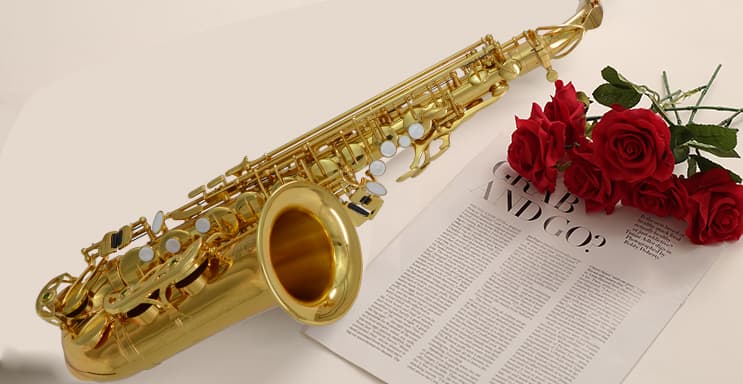Saxophone Jazz Improvisation

Jazz music often features the saxophone in performances, as the two share an exceptionally high degree of artistic compatibility in music. Jazz is characterized by improvisation, employing techniques such as syncopation and displaced accents to create dynamic rhythms, with a dramatic tonal quality that gives the music a multifaceted form—intertwining humor and melancholy, intensity and depth. Meanwhile, the saxophone's techniques, including vibrato, tonguing, overblowing, and growling, perfectly meet the core demands of jazz improvisation. It can be said that the saxophone is one of the most iconic instruments in jazz, and the development of the two has been mutually reinforcing.
### I. The Origins of Jazz and the Saxophone
#### (1) Major Genres and Characteristics of Jazz
Jazz originated in Africa and flourished in the United States in the late 19th century before gaining global popularity. It blends the essence of blues and ragtime, establishing its status as the "king" of popular music through rich syncopated rhythms and free improvisation. Over more than a century of evolution, jazz has developed into a variety of styles.
#### (2) The Role of the Saxophone in Jazz
Throughout jazz’s development, the saxophone has remained closely intertwined with it—their growth has been highly synchronized. The evolution of jazz styles has driven innovation in saxophone techniques, while the saxophone’s unique qualities have, in turn, enhanced jazz’s expressive power.
The saxophone is one of the most commonly used instruments in jazz, with a wide range (spanning over two octaves, approaching three).
Although the saxophone can also perform classical music, it excels in jazz and light music, making it one of the core instruments in shaping jazz’s distinctive style.
### II. Improvisation Techniques in Saxophone Jazz
Saxophone performance relies on the coordinated use of the lips, tongue, breath, and fingers, while jazz improvisation further demands solid fundamentals, quick reflexes, and a deep sense of musical rhythm. Some musicians, despite extensive practice to improve technical proficiency, end up with rigid and lifeless performances due to treating practice as mere mechanical repetition. In reality, the value of etudes lies not only in technical training but also in allowing musicians to explore musical beauty—treating each etude as a complete piece is the essence of improvisation.
#### (1) Coordinated Body Movements
In improvisation, proper physical control is the foundation for musical fluency and visual appeal:
- **Embouchure Control**: Before playing, adjust the smile-like curvature of the lips and keep the jaw naturally relaxed; depress the tongue root and open the oral cavity before producing sound; during performance, stabilize the mouthpiece with the mouth while relaxing the orbicularis oris muscles around the lips.
- **Breath Training**: Aim for "fewer breaths, more air intake" to maintain stable air pressure during extended performances, distributing the load evenly across respiratory muscles. This allows the breath to form a "column of air," enhancing the music’s sense of flow and liveliness.
#### (2) Shaping the Overall Musical Imagery
Before improvising, it is essential to define a theme (centered on emotional shifts or narrative development) based on the musical style, clearly conveying ideas within the constraints of harmony, rhythm, and bars to engage the audience emotionally. A coherent structure can be built by segmenting, for example:
- The first 8 bars establish the tonality, presenting the core content and ideas;
- The next 8 bars shift the mood or tonality, forming a complete structure of "first theme—second theme—variation—deepening theme—theme recapitulation."
Exceptional improvisation creates a "breathing resonance" between the audience and the performer, embodying the charm of music as a "heart-to-heart conversation."
#### (3) Mastering Blues Scales
Blues, a foundational element of jazz, is based on the pentatonic scale and features unique harmonies (e.g., the C blues scale: 1, ♭3, 4, 5, ♭7). In saxophone improvisation, modes often incorporate ♯4 or ♭5, requiring systematic practice:
- Use a metronome at around 60 BPM, playing one note per beat to familiarize and memorize fingerings in all keys.
- Once proficient in the blues scales across all twelve keys, performances will become more fluid, with a significantly enhanced sense of rhythm, laying the groundwork for improvisation.
#### (4) Listening and Blending with the Backing Music
Improvisation must be grounded in the backing music, first perceiving its harmonic progression, rhythm, and groove. For example, when faced with a chord progression like C–Am–F–G, listen for 4–8 bars to mentally "sketch" the improvisation. Then, by controlling note density and pitch variations, the improvised passage can stand out while seamlessly integrating with the overall music, leaving a lasting impression.
### III. Conclusion
The saxophone is a highly distinctive and expressive instrument with a wide range of applications, and its pairing with jazz is hailed as "the most harmonious musical combination," indispensable in improvisation. To elevate improvisational skills in saxophone jazz, focus on body coordination, musical imagery, blues scale mastery, and attentive listening to the backing music. Additionally, listening to classic jazz works and cultivating thoughtful reflection can bring unexpected inspiration to live performances. The deep fusion of the two is a vital key to jazz’s enduring vitality.